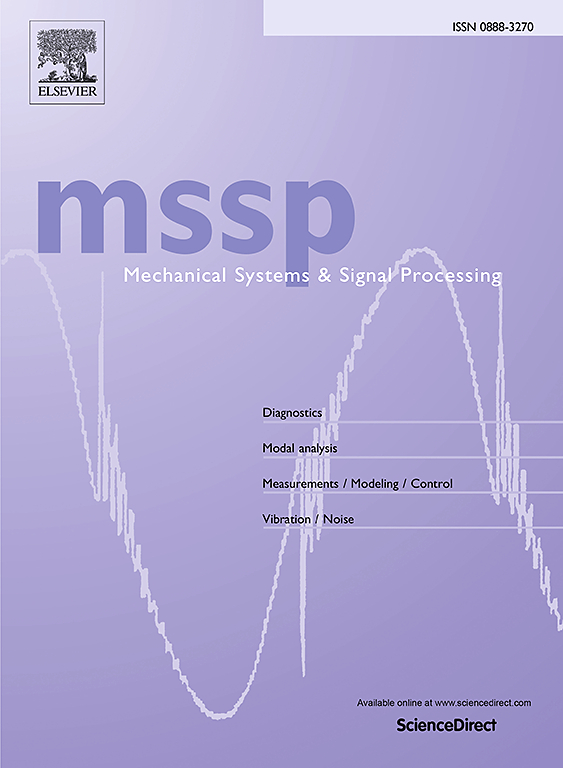3D sound radiation reconstruction from camera measurements
IF 7.9
1区 工程技术
Q1 ENGINEERING, MECHANICAL
引用次数: 0
Abstract
In general, the measurement of the sound radiation field by machinery and partitions requires time-consuming tests, which should be carried out in specially dedicated anechoic/reverberant facilities with calibrated sensors and complex acquisition and post processing equipment. This article introduces a two-step method for the identification from optical measurements of the free-field sound radiation generated by flexural vibrations of closed shells. In the first step, the flexural vibration of the shell is reconstructed with a frequency domain triangulation technique based on short multi-view video acquisitions made with a single high-resolution, high-speed camera. In the second step, the free-field sound radiation is derived from a discretized boundary integral formulation. The study is focused on the identification of the sound radiation from the flexural vibration of a baffled cylinder model structure. The vibration and sound fields reconstructed from the camera measurements are validated against direct measurements taken with a laser scanner vibrometer and a microphone array, respectively. Overall, this research demonstrates that optical methods based on camera measurements can be suitably employed to produce fast and accurate full-field measurements of sound radiation of closed shells (without the need for a dedicated measurement environment, e.g. reverberant, anechoic chambers).
求助全文
约1分钟内获得全文
求助全文
来源期刊

Mechanical Systems and Signal Processing
工程技术-工程:机械
CiteScore
14.80
自引率
13.10%
发文量
1183
审稿时长
5.4 months
期刊介绍:
Journal Name: Mechanical Systems and Signal Processing (MSSP)
Interdisciplinary Focus:
Mechanical, Aerospace, and Civil Engineering
Purpose:Reporting scientific advancements of the highest quality
Arising from new techniques in sensing, instrumentation, signal processing, modelling, and control of dynamic systems
 求助内容:
求助内容: 应助结果提醒方式:
应助结果提醒方式:


